Paper
A familiar and most budget-friendly way to seal cracks is old newspapers and paper. Depending on the size of the cracks, choose the most suitable option for using waste paper.
- The paper is cut into strips of 3-5 cm, soaked in paste or soap solution and glued to the window joints. Homemade blanks are often replaced with masking tape. You don’t have to mess around with glue, and longer strips will look much neater. Despite all the advantages, this insulation option has a significant disadvantage – when it gets warm, the paper often comes off along with the paint.
- Thin tubes are twisted from album sheets or newspapers, which are tightly driven into cracks and crevices using a screwdriver, spatula or knife.
- Putty is made from waste paper. Newspapers are crushed, soaked, mixed with chalk and flour in proportions of 2 to 1. The solution is stirred to a medium consistency, and then used to fill the cracks.
You will have to wait until spring to ventilate windows sealed with paper. In case it suddenly gets warmer in winter, it is worth leaving at least one unsealed window.
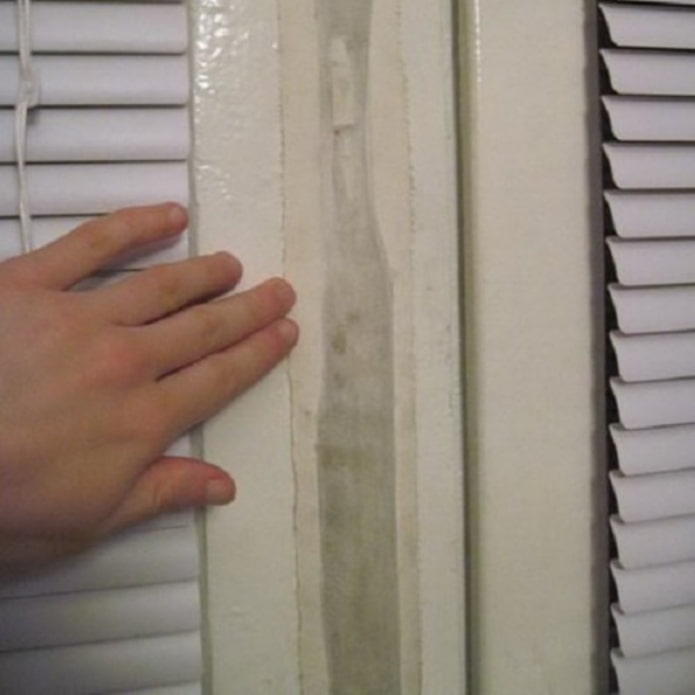
Cotton wool
Sealing cracks with cotton wool or soft cloth is in many ways similar to the previous method of insulation. Using a sharp object, the material is pushed into the frame joints. Scotch tape or a strip of fabric soaked in a soap solution are glued on top.
The disadvantages of insulating with cotton wool are the same as with paper:
- It is impossible to ventilate the window during a temporary increase in temperature;
- Paint peels off when removing the strips of fabric.
In this case, the cotton wool is easy enough to remove when “unpacking” the window. It does not turn yellow or harden during the winter. You can use both technical and ordinary household cotton wool for the job.
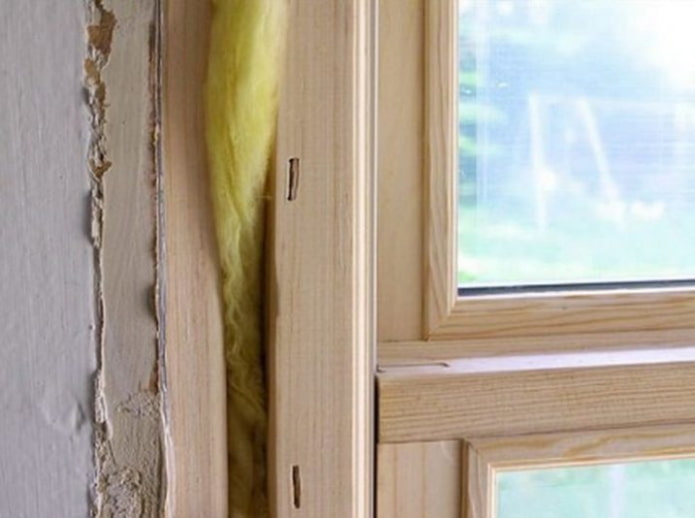
Paraffin
Melted paraffin can cope with a draft from small cracks and at the same time preserve the visual beauty of a wooden window. The insulation will last for several seasons and will not cause visible damage to the paint on the wooden frame.
Paraffin is heated in a water bath to 70 degrees. Using a pipette, syringe or spoon, the mixture is poured into the cracks and allowed to cool. If the cracks are wide enough, you can put a strip of fabric or tape in them before pouring in the paraffin.
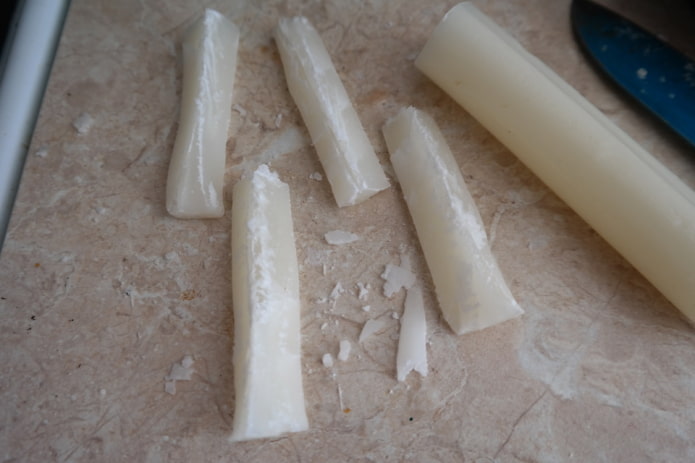
Sealants or foam
There are several advantages to sealing cracks with sealants:
- They can be used to fill not only defects in the wooden frame, but also gaps between the frame and the glass.
- You can choose a transparent sealant or match the shade to the color of the frame.
- The solution is easy to apply and lasts for more than one season.
If the cracks are large, you can use polyurethane foam in addition to silicone sealants. This method is especially good for eliminating gaps between the frame and the slope or window sill. When working with foam, it is important to follow several rules:
- It is better to carry out the work before the onset of frost.
- Shake the can well before use.
- Fill the cracks by a third, because the composition expands when hardening.
- After the composition dries, cut off the excess immediately. For greater decorativeness and protection from sunlight, the surface is primed and plastered or covered with gypsum putty.
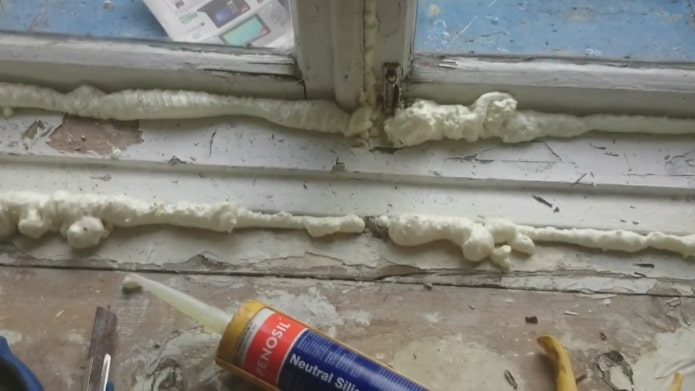
Foam Rubber
If completely blocking the windows for the winter is not considered, the option of insulating with foam rubber tape will do. It is sold in rolls of various lengths and has an adhesive side, due to which it is attached to the window sashes.
Before sealing, for a tighter adhesion, the frame must be washed, cleaned of peeling paint and dried well. After removing the protective layer from the adhesive side, the foam rubber tape is attached along the perimeter of the window, covering all the cracks. In case of severe frame distortion and wide cracks, the seal is glued in several layers.
When the weather gets warmer, the foam rubber can be left in place. If the adhesive base is of high enough quality, the seal will last at least 2 seasons.
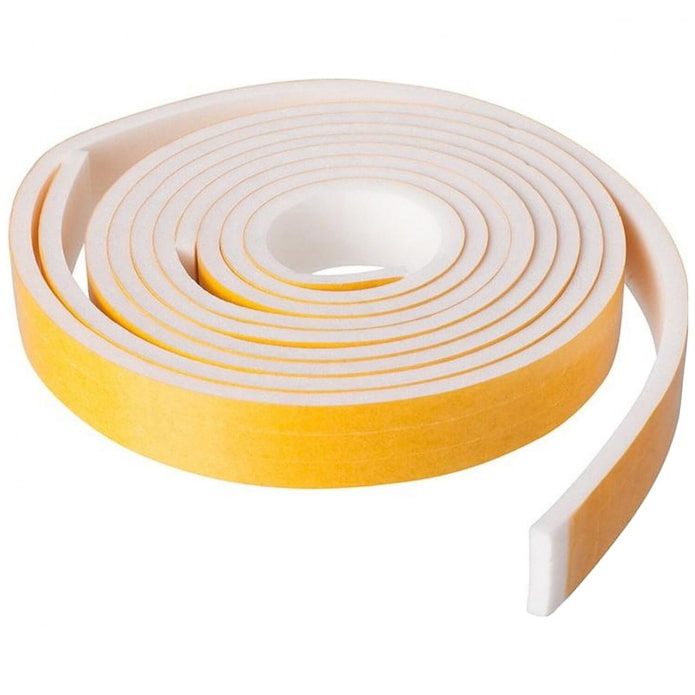
Sealing cords
Along with foam tape, all kinds of cord seals are used to seal the frame.
- A clothesline is the simplest and most cost-effective option. Using small nails or pushpins, it is fixed to the surface of the frame, closing small gaps and increasing the tightness of the sashes when closing the window.
- Plastic seals are a more modern and durable method of sealing. The cords have different shapes, which makes them versatile for dealing with cracks and crevices of various sizes. D-shaped and E-shaped seals are more suitable for wooden windows, designed for large and relatively small defects, respectively.
- Tubular rubber seals are relatively inexpensive and easy to use. In most cases, the cords have a self-adhesive base, but for greater reliability they require additional placement on glue or silicone sealant. The disadvantage of rubber seals is a shorter service life compared to, for example, PVC analogs. After 2-3 seasons, the rubber will dry out and start to crumble.
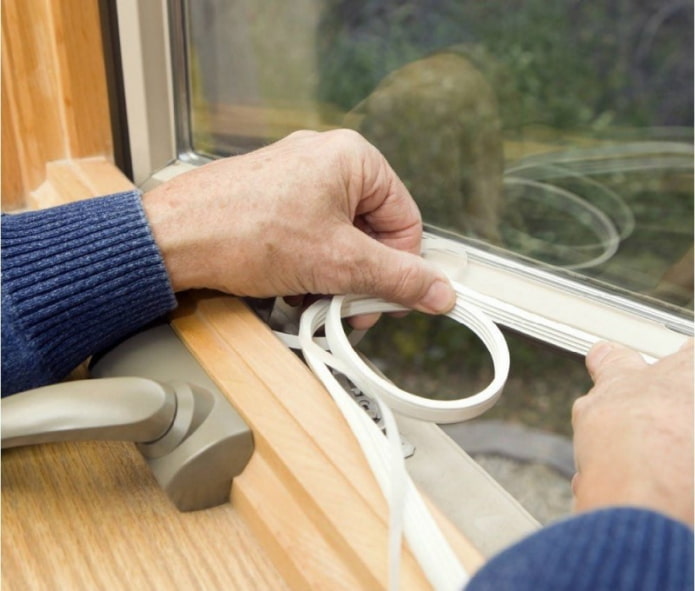
Polyester film
Transparent film with a metallic coating was initially used to improve the thermal insulation properties and strength of glass, but over time it began to be used to insulate the entire window panel. The polyester base makes it visually invisible. The film completely transmits sunlight, but at the same time acts as a barrier to heat loss from the room.
Before applying the film, the glass and frame are washed, dried and degreased. Large cracks are sealed with window putty. Double-sided tape is glued around the perimeter of the window, onto which a film cut to the size of the window is attached. To avoid leaving fingerprints, work with gloves.
When the temperature changes, condensation may form in the space between the film and the glass. To prevent it, you can sprinkle some silica gel or salt in the corners and along the lower joint, which will collect excess moisture.
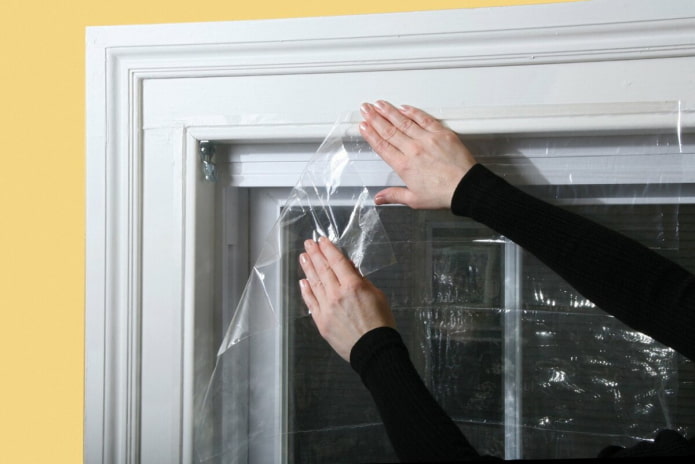
Often, internal insulation is not enough. Along with the frame insulation, it is important to periodically inspect the external slopes and ebbs for cracks. The cracks are sealed with foam or polystyrene foam, primed, and painted. A strip is installed to drain rainwater. If you approach the issue comprehensively, the heat from a wooden frame will be no less than from a plastic double-glazed window.
Now reading:
- ways to update your apartment interior economically and stylishly
- Discover the Thrills of the BMW Z4 Roadster
- Blue kitchen: 54 photos with color combinations and design solutions.
- Kitchen design with black cabinetry: 90 elegant photos and ideas.
- Living room in beige tones: more than 60 photos and modern design solutions.